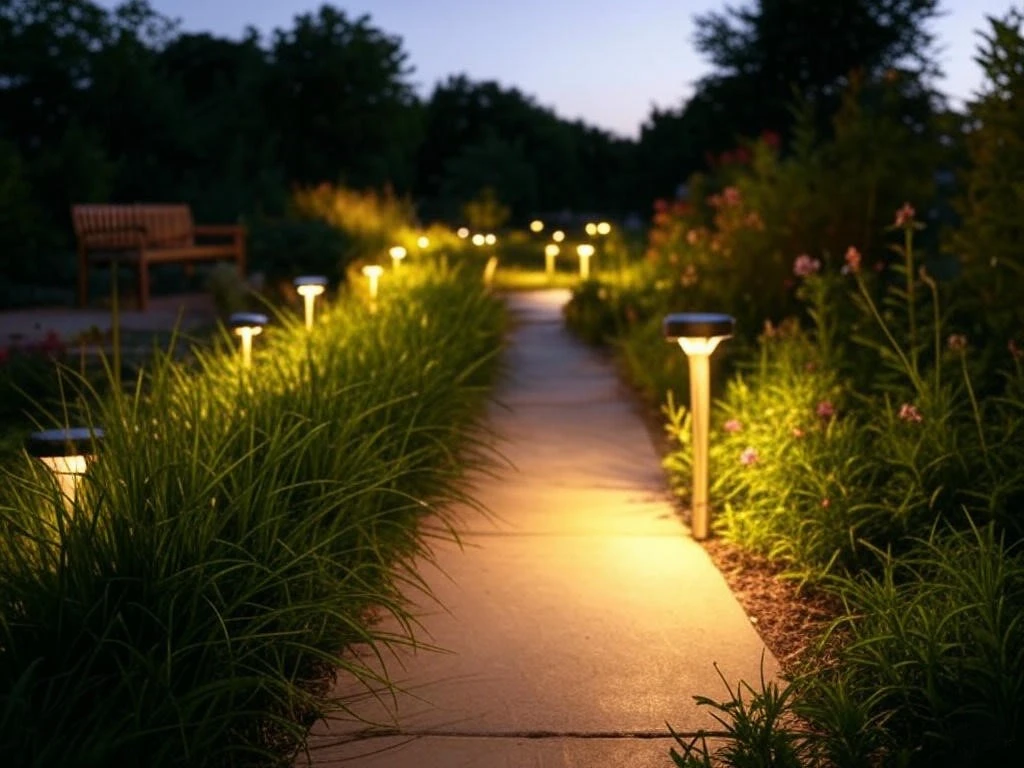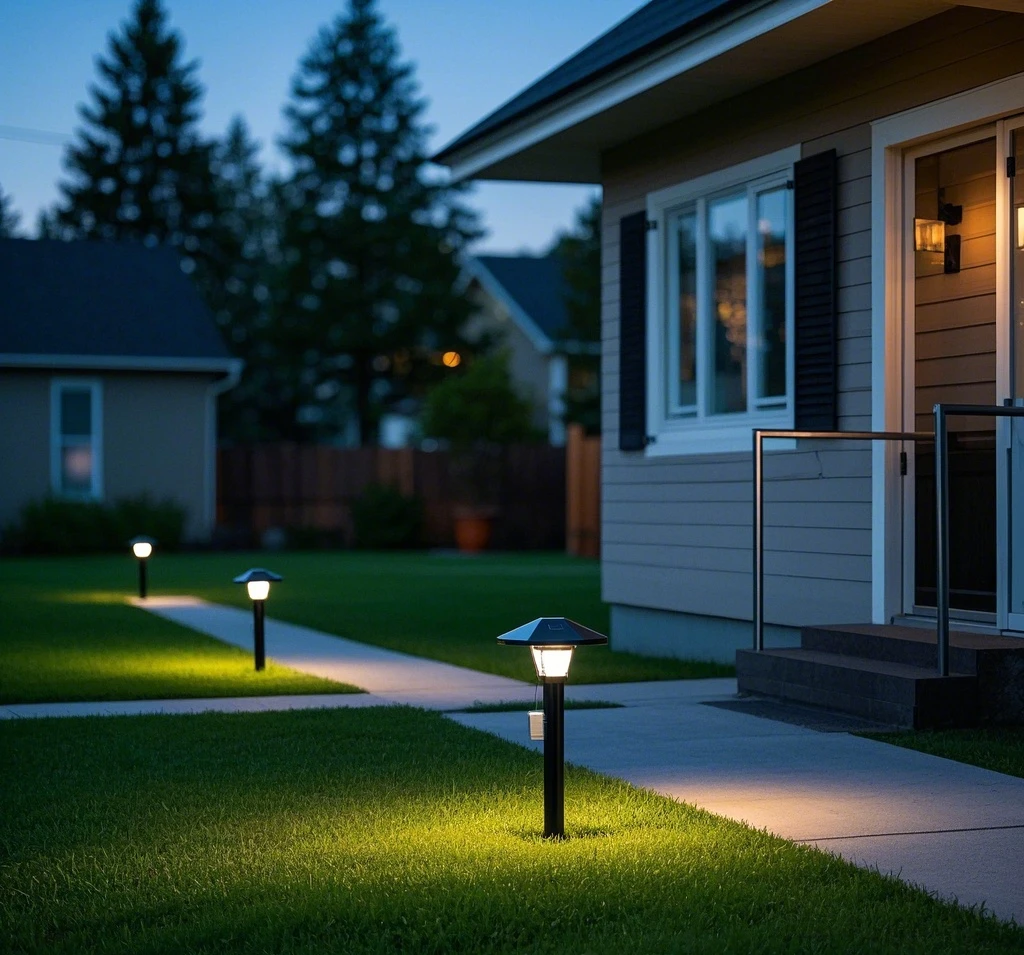As the head of a multigenerational household, you want your backyard to be a shared space where everyone feels at home. Grandma shouldn’t stumble on a dark path, and your young adult kids shouldn’t feel like they’re dining under stadium lights. The challenge? Designing a yard that’s safe for seniors with bright, reliable lighting while creating a cozy, inviting vibe for younger folks. Solar-powered path lights, wall lights, string lights, and spotlights—paired with smart controls—can bridge these needs. This guide walks you through creating a backyard that’s safe, stylish, and welcoming for all ages, with practical steps and clear specs tailored for North American homes.

Understanding Cross-Generational Lighting Needs
In a multigenerational home, lighting serves distinct purposes. Seniors need clear, high-brightness illumination to navigate safely, especially at night when vision or balance may be weaker. A 2023 study from the National Institute on Aging notes that 30% of seniors over 65 experience falls, often due to poor lighting. Meanwhile, younger family members crave ambiance—soft, layered lighting for gatherings, barbecues, or quiet evenings. The solution lies in solar lighting that’s versatile, energy-efficient, and easy to manage, ensuring your yard is a shared haven without running up the electric bill.
Here’s how to design for both groups, with specific products and setups to meet their needs.
Lighting for Seniors: Safety and Clarity
For elderly family members, the focus is on bright, consistent lighting to prevent trips and falls. Solar path lights and wall lights are ideal, as they require no wiring and can be placed strategically. Here’s what to prioritize:
- High-Brightness Path Lights (≥300 Lumens, Warm White):
Choose solar path lights with at least 300 lumens in warm white (2700–3000K) for clear, non-glaring illumination. Space them 1.5 meters (5 feet) apart along walkways to ensure even coverage. Look for models with sturdy stakes and a height of about 1.2 meters (4 feet) to keep light at knee-to-waist level, making paths easy to see without obstructing movement. Opt for rounded or smooth-edged designs to avoid injury if someone bumps into them. Example: Philips Hue Solar Path Lights (320 lumens, adjustable height). - Dual-Mode Wall Lights (Constant + Motion-Sensing):
Install solar wall lights with dual modes: a constant low glow (50–100 lumens) for general visibility and a motion-activated high beam (400–600 lumens) for safety when someone approaches. Mount these at 1.8–2 meters (6–7 feet) on walls, fences, or near steps. Ensure the light body has no sharp edges. Example: Ring Solar Wall Light with Motion Sensor (500 lumens, 3000K). - Placement Tips:
- Place path lights along walkways, especially near steps or uneven ground.
- Position wall lights at entry points (e.g., patio doors) or near seating areas where seniors might rest.
- Ensure solar panels face south for maximum sunlight exposure in North America.
These choices create a safe environment where seniors can walk confidently, even after dusk.
Lighting for Younger Generations: Ambiance and Style
Younger family members—whether teens, young adults, or busy professionals—want a backyard that feels like an extension of their social life. They’re after low-saturation, warm lighting that sets a relaxed mood for dinners, game nights, or chilling with friends. Solar string lights and subtle spotlights deliver this vibe without overwhelming the space.

- Low-Saturation String Lights (Warm Yellow, 2000–2500K):
Wrap solar-powered string lights around pergolas, gazebos, or shade structures to create a soft, festive glow. Choose warm yellow tones (2000–2500K) with a low lumen output (10–20 lumens per bulb) for a cozy, intimate feel. Edison-style or globe bulbs add a trendy touch. Example: Brightech Ambience Pro Solar String Lights (27 feet, 15 bulbs). - Low-Brightness Spotlights for Greenery (50–100 Lumens):
Use small solar spotlights to uplight trees, shrubs, or garden features. Aim for 50–100 lumens in warm white (2700K) to add depth and layers without harsh glare. Angle the lights to graze foliage, creating subtle shadows that enhance the yard’s aesthetic. Example: URPOWER Solar Spotlights (4-pack, adjustable angle). - Placement Tips:
- Drape string lights loosely for a casual look, ensuring the solar panel is unobstructed.
- Position spotlights 1–2 meters from plants, tilting upward to highlight texture.
- Avoid pointing spotlights at seating areas to prevent glare in guests’ eyes.
This setup transforms the yard into a stylish hangout spot that younger folks will love.
Smart Controls: Bridging Generations with Technology
To make your lighting work seamlessly for everyone, add smart controls that adapt to different times and needs. Solar lights with voice control and scheduling features let you toggle between safety-focused lighting at night and ambient vibes during the day. Here’s how to set it up:
- Voice-Controlled Systems:
Choose solar lights compatible with smart home platforms like Amazon Alexa or Google Home. Brands like Philips Hue and Ring offer solar lights that pair with smart hubs. For example, you can say, “Alexa, turn on the path lights,” to activate bright mode for Grandma’s evening walk or “Dim the string lights” for a family dinner. Ensure the hub is Wi-Fi-enabled and placed indoors near a router. - Time-Segmented Lighting Schedules:
Use a smart app (e.g., Ring Home or Philips Hue app) to program lights for different times:- Daytime/Evening (5–8 PM): String lights and spotlights on low (20–50 lumens) for ambiance during family gatherings.
- Night (8 PM–Midnight): Path and wall lights on high (300–600 lumens) with motion sensors for safety.
- Late Night (Midnight–6 AM): Wall lights in low constant mode (50 lumens) to save battery while maintaining visibility.
Most apps let you set these schedules in 5–10 minutes via a smartphone.
- Setup Steps:
- Choose Compatible Lights: Verify that your solar lights support smart features (check for “Alexa/Google Home compatible” on the box).
- Install the Hub: Plug the smart hub into an indoor outlet and connect it to Wi-Fi using the brand’s app.
- Pair the Lights: Follow app instructions to sync each light (usually involves scanning a QR code or holding a button).
- Set Schedules: Use the app to create time-based rules (e.g., “Path lights high from 8 PM”).
- Test Voice Commands: Try phrases like “Turn on backyard lights” to ensure responsiveness.
This system lets everyone enjoy the yard without fiddling with switches—seniors get safety, and younger folks get their vibe.
Practical Installation Guide
Setting up your multigenerational lighting system is straightforward and can be done in a weekend. Here’s a step-by-step plan:
- Assess Your Yard (30 Minutes):
Walk the space with family members to identify key areas: walkways for seniors, social spots for younger folks, and greenery for accents. Note south-facing spots for solar panels. - Install Safety Lighting (1–2 Hours):
- Path Lights: Insert stakes into the ground along walkways, 1.5 meters apart. Ensure the light is at 1.2 meters and the solar panel is unobstructed.
- Wall Lights: Mount on fences or walls using included brackets (no drilling needed for most solar models). Test motion sensors by walking past.
- Add Ambiance Lighting (1 Hour):
- String Lights: Drape over pergolas or gazebos, securing with removable clips or hooks. Place the solar panel on a flat, sunny surface.
- Spotlights: Position near plants, angling upward. Secure stakes in the soil or use weighted bases for hard surfaces.
- Set Up Smart Controls (30 Minutes):
Follow the voice control setup above. Test schedules and commands to confirm they meet both safety and ambiance needs. - Test at Night (15 Minutes):
After a full day of charging (6–8 hours of sunlight), check the lights at dusk. Adjust angles or positions if any areas are too dim or bright.
Budget and Sourcing
You can create this setup for $150–$200, depending on yard size. Here’s a sample breakdown:
- Path Lights: $60 for 6-pack (300 lumens, e.g., Philips Hue Solar Path Lights).
- Wall Lights: $50 for 2-pack (dual-mode, e.g., Ring Solar Wall Lights).
- String Lights: $30 for 27-foot set (e.g., Brightech Solar String Lights).
- Spotlights: $30 for 4-pack (e.g., URPOWER Solar Spotlights).
- Smart Hub: $30–50 (e.g., Amazon Echo Dot or Philips Hue Bridge).
Shop at Amazon, Home Depot, or Walmart for deals. Check reviews for battery life and durability, as solar lights vary in quality.
Maintenance and Longevity
Solar lights are low-maintenance but benefit from occasional care:
- Clean Panels: Wipe solar panels monthly with a damp cloth to remove dust or debris.
- Check Batteries: Most solar lights use rechargeable NiMH batteries, lasting 1–2 years. Replace with compatible models (check product manual).
- Winter Storage: In snowy regions, store string lights and spotlights indoors during winter to protect from frost. Path and wall lights can stay if rated IP65 or higher.
A Yard for All Ages
With solar path lights, wall lights, string lights, and spotlights, your backyard becomes a shared space where everyone thrives. Seniors walk safely under bright, warm lights, while younger family members enjoy soft, stylish ambiance for gatherings. Smart controls make it easy to switch between modes, ensuring the yard adapts to every moment—whether it’s Grandma’s evening stroll or a weekend barbecue. Invest a weekend and a modest budget, and you’ll create a space that brings your multigenerational family together, night after night.


Leave a Reply